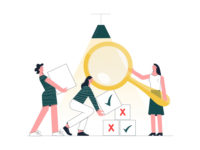Wearable health monitoring
How to deal with the data

Back in 2015 I had a widow-maker heart attack. That near-death event focused attention on my heart health, particularly when I push to physical extremes during mountain backpacking.
During backpack trips from 2015-2018, heart health beats per minute (BPM) was monitored by pulse feel and count. This year’s challenge was a 40-mile backpack in Yosemite with permit to summit Half Dome’s cable route. My heart health was monitored with an Apple 4 watch. BPM and other useful data on my wrist were readily seen with a glance. (See photo)
The Apple Watch is a constant companion. My sleeping heart rate is about 45 BPM. Resting heart is about 56 BPM. The watch will notify me of low or high heart rates. There’s notification, too, if irregular heart rhythm is detected, which is an FDA-cleared ECG feature. Point is, I’m confident with Apple Watch’s heart monitoring capabilities.
Other features
These health monitoring features may be applicable in OHS situations. They save lives by nudging people to seek medical care. Or motivate people to take better care of their health. There are also emergency features. This past September, a man fell hard and was knocked unconscious. The watch’s “Fall” app notified EMS of the person’s need for help, along with his location. He was subsequently retrieved by EMS and rushed to the hospital.
Noise app
A built-in noise app was released with watchOS6 this past September. A noise app has clear applicability to OHS practice. (See photo)
This photo shows decibels captured when I shouted at my Apple Watch. This view dominates the watch face. The noise app, however, can be condensed with other apps and variety of watch faces selected by the user.
The app measures from 30-120 dBA. Notification thresholds may be set at 80-100 dB at 5 dB increments.
Whenever the selected threshold — 85, 90 or 95 dBA — is reached over an average of three minutes, the watch vibrates to notify of possible harmful effects.
Accuracy
Among reports I’ve reviewed, accuracy is +/- 2 dBA. This is comparable to NIOSH’s SLM app created for iOS devices such as smart phones and tablets. NIOSH’s SLM may be calibrated with iPhone’s internal microphone, too. NIOSH hasn’t evaluated the Apple Watch noise app, to my knowledge, but I’m confident they will do so in the future. Millions of Americans using the Apple Watch are hard to ignore.
In a simple field trial, I was pleased by the Apple Watch’s noise app performance. I informally compared my technical noise measurements (third-party calibrated Type 2 SLM meters) for a client against noise measured with the watch. Data was consistent. The watch noise app should not be used for OSHA compliance purposes. I have little argument, at this time, if the app is used for noise management conformance purposes.
I support use of this technology for a variety of reasons. My client above prohibits employee use of cell phones in the production areas. But I observed the plant’s union president and a few other employees wore an Apple Watch. Employees should not wear jewelry, watch included, if they operate machinery. But employees who don’t operate equipment may need to wear a watch if for no other reason than to tell time. I’m confident that nearly all Apple Watch users will be intrigued by the watch’s built-in, download not required, noise app. They’ll use it even if just for the novelty. The more people know about noise, including measuring the dBs themselves, can’t be a bad thing – or can it?
Noise awareness?
OHS pros should lead the pack with noise awareness. OSHA’s action level and TLV® for noise at 8-hour TWA begins at 85 dBA. Is workplace noise at 80 dBA 8-hour TWA a concern? Specifically, could it be a legally actionable concern?
Kentucky’s (2019) Pregnant Workers Health Impact Assessment (HIA) developed by the state Department of Public Health and Wellness informs decision-making regarding Kentucky’s Pregnant Workers Act, effective June 2019. The HIA1 and its summary2 include risk information, respectively, such as “Women exposed to 80 dB for an 8-hour shift were at increased risk of preterm delivery,” and pregnant women should “reduce exposure to loud noises (over 80 dB for extended periods of time) in order to prevent hearing loss in a child.”
How should you deal with the above information? How should a pregnant worker deal with this information? The HIA states its information may extend beyond Kentucky’s “geographical boundaries.” Be aware, too, this past September, UPS paid $2.25 million to settle an EEOC pregnancy discrimination charge for failure to provide “reasonable accommodations” to its pregnant workers. Will reduction of noise below 80 dBA TWA become a new EEOC reasonable accommodation for pregnant workers? Sometimes we must think beyond OSHA’s requirements.
Cycle tracking
Cycle tracking is a built-in app for Apple’s watchOS6. This feature was introduced with great applause from developers looking for Apple’s foray into reproductive health monitoring. The app tracks menstrual cycles and symptoms to help predict, among other things, fertility windows. About 40 percent of all pregnancies are unexpected. The app may help workers determine the best time to become pregnant. Users can provide data collected by the app to their doctor to help diagnose fertility issues such as endometriosis, per Apple. Be aware, endometriosis was addressed in the August 2019 “Women & Safety” issue of PSJ (ASSP’s journal).
Will these health monitoring features, expanding with time, become a benefit or risk to OHS pros? It depends upon who manages the data.
References:
Looking for a reprint of this article?
From high-res PDFs to custom plaques, order your copy today!






